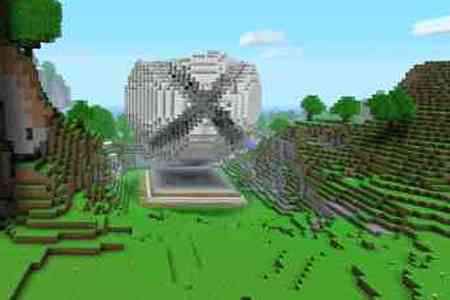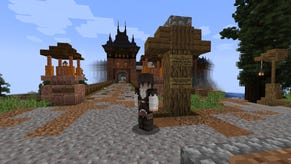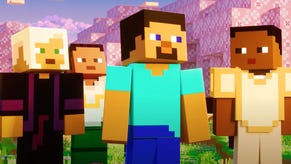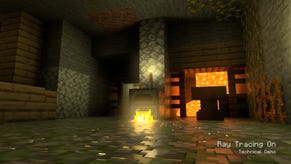Game of the Week: Minecraft 360
In praise of platform exclusives.
Is it rational to feel a greater fondness for single-format releases than for multi-platform games? I'm not sure, but I know I do.
There are the obvious benefits of tailoring a game to a specific control scheme, hardware spec or display. But even games that would be technically possible on rival platforms - Halo 3, say, or Journey - I imagine I can sense a completeness, a harmony, that comes from technology, design and code having been locked together in a tight embrace since day one.
It's a prejudice, really - one that endures past the point when developers have (quite sensibly) decided to take their work to the widest audience possible. I still feel quite strongly that all Valve games belong on PC, and that modern Final Fantasy just feels wrong if it's not played on a PlayStation. And it's an easy prejudice to indulge when you're lucky enough to have every gaming system under the sun at your disposal. No, it's not rational - but that's just it. I like the idea of an emotional bond tying hardware and software together, making them more than the sum of their parts.
This week, we're unusually graced with a string of single-platform releases. Two are the result of Sony's boundless energy and bottomless resources as a publisher of games for its own consoles. (Not even EA has released more games so far in 2012.) Starhawk is a sequel to the popular Warhawk, a multiplayer battlefield from PS3's early days, which adds a light strategic base-building element to the vehicular carnage.

"At its best, Starhawk can be very good indeed," wrote Dan Whitehead in our Starhawk review. "Warhawk was well-supported with balancing patches and expansions, so there's every chance that Starhawk will evolve into something special over time, as players settle in and LightBox irons out the kinks.
"Right now, though? It's good, but not much more than that. The maps are enjoyable without being particularly inspiring or memorable. The nods to RTS and tower defence are welcome, but ultimately don't do enough to change the core gameplay, tied as they are to game modes that have already been wrung dry."
Sony often seems to develop its games in a bubble - catering to fans and its own whims without paying much attention to what's been going on in the world around it. Gran Turismo 5 was one such game, and Starhawk's story is similar, with another five-year gap accentuating the disconnect between it and its rivals. It can be frustrating, but it's also what gives their games such a unique flavour.
At the other end of the conceptual scale we have Plastic's Datura, a slice of experiential art-gaming tailored to show off PS3's 3D and Move technologies. Again, the difference in attitude is stark; while Microsoft leaves indies like Fez's Polytron struggling on their own in a simulacrum of the cruel world outside its walled garden, Sony incubates them and integrates them into its vision. The results aren't always as inspiring as Journey, but you don't see anyone else making them.
"If the execution fails to live up to the promise, it's hard not to admire the ambition to at least create something different," Johnny Minkley wrote in our Datura review. "And it's another praiseworthy example of Sony Santa Monica taking a punt on an oddball indie project... It's better with Move because it was made for it. It's not, though, reason enough to buy one. But if you do have Sony's under-supported device stuffed in a drawer, Datura is a flawed experiment that's worth a look if only because it reaches towards - and occasionally touches - something that feels genuinely fresh."
Although neither of these games is for me, I've got to respect Sony for doing more than anyone else around to prop up my predilection for bespoke, first-party gaming. But I'm not a monster. I don't want to deny more people a chance to sample a great single-format game, so I'm also an admirer of a really good conversion - or should I say adaptation.
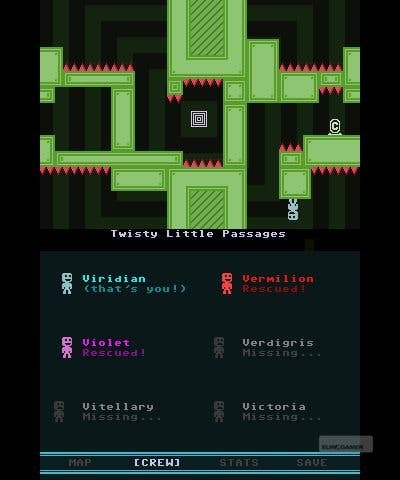
There's an almost equal pleasure to be found in the resourcefulness of tailoring a game to a system it wasn't made for. The more difficult or inappropriate the project, the better. From a purely technical perspective, the recent Xbox 360 version of The Witcher 2 was a great example, and I'm excited by the idea of Blizzard tackling the interface design challenges of putting Diablo 3 on consoles. Blizzard being Blizzard, it will probably come out an unrecognisably different game.
This week also saw a couple of great conversions. Terry Cavanagh's brutal retro platformer VVVVVV arrived on the European 3DS eShop at long last. Getting Nintendo's portable to handle the Commodore 64-era graphics was hardly a technical challenge, but there's something both fitting and weird about experiencing it with modern stereoscopic 3D effects (used, cutely, like the parallax scrolling of old) and a separate map screen - because this game was always a perfect balance of ancient and modern.
"Switching effortlessly between sadistic punishment and boundless freedom, VVVVVV provides more moment to moment pleasure in its scant two or three hour campaign than most games do at four times the length," wrote Jeffrey Matulef in our VVVVVV review. "While not flashy, long, or for the faint of heart, those with an affinity for old-school difficulty and newfangled mollycoddling checkpoints will find Cavanagh's tribute to the past could teach its high-definition contemporaries a thing or two."
Our game of the week is similarly a game with simple graphics that you'd think would be a walk in the park for its host platform - but there's more to this conversion than meets the eye.
Minecraft: Xbox 360 Edition
In fact, there was a technical challenge to putting Minecraft on Xbox 360 (which Digital Foundry will be looking at soon). Microsoft's machine is long on graphical horsepower and short on memory, while Notch's game has basic visuals but needs memory and computational power to generate and manage its massive, persistent, random environments.
Bigger than that, though, is the philosophical divide. On PC, despite its massive success, Minecraft has remained a homebrew game in ethos. It's far from user friendly and you need to host or rent a server if you want to create a world to share with your friends or the wider community. This sort of thing doesn't fly on Xbox Live, which prides itself on being one of the most effortless online user experiences anywhere.
So when Fortresscraft's Adam Sawkins slams Mojang and 4J Studios for shipping an older version of Minecraft with no dedicated server support and smaller worlds, he's missing the point. He's also missing the enormous effort which has gone into the controls, tutorial, in-game tip system, seamless local and peer-to-peer multiplayer, and fine-tuned design. All of these create a subtly but pervasively different Minecraft that's as handmade for Xbox Live as the original was for the wilds of PC.
It's "a Minecraft that's slightly less advanced, much easier to get to grips with and perfectly tuned for its slick and friendly platform, while preserving almost all of the original game's unquestioned genius," I wrote in our Minecraft: Xbox 360 Edition review. "It will never eclipse the one true Minecraft... but Xbox 360 Edition is as close to an untamed sandbox as you can get in one shiny, sugared pellet of console gaming. It's the real deal."
You don't need a powerful gaming PC to enjoy the original Minecraft, but you do need a certain proactive mindset to overcome the barriers to enjoying it. Xbox 360 Edition is a slimmer version of that experience, yes, but it's also one that lifts those barriers away; it's so clever because it doesn't just adapt for the technology of its new platform, it adapts for the psychology of it, too. If only every conversion was done with such care.
